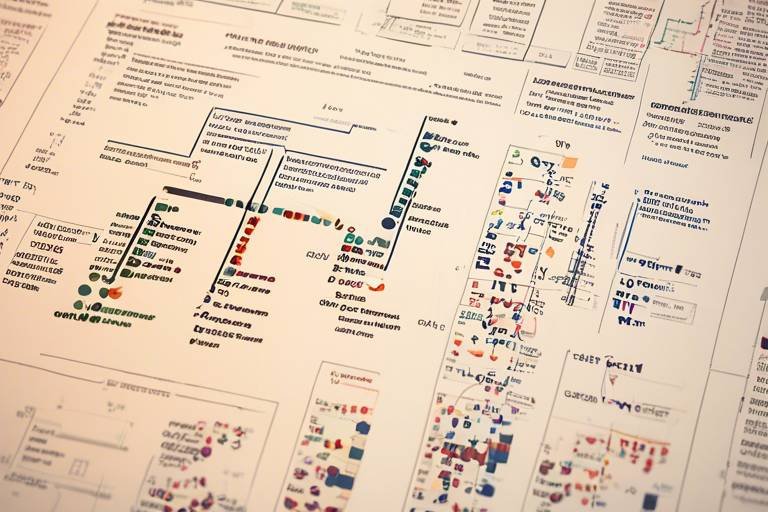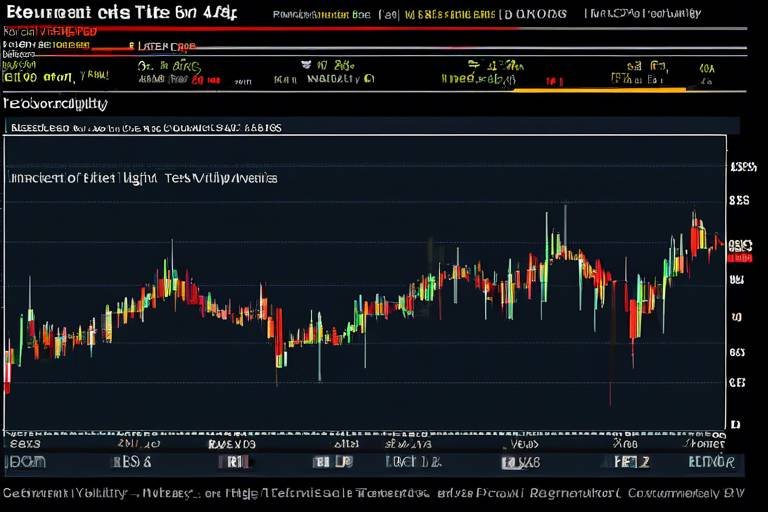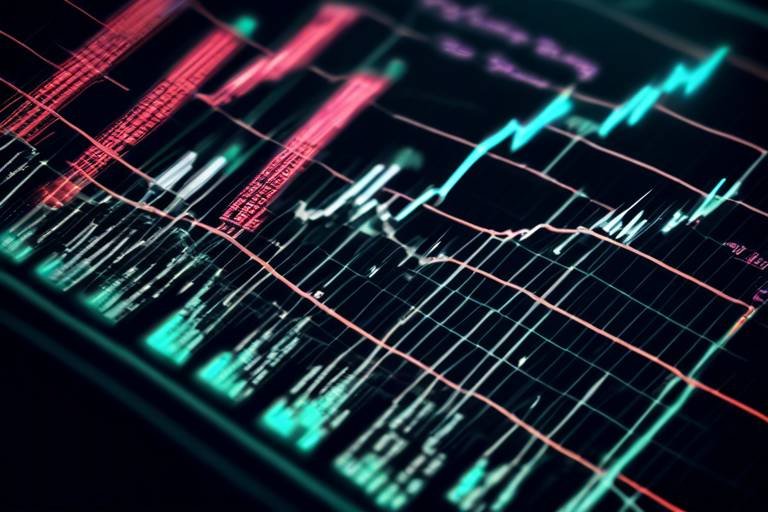How to Use Technical Analysis to Identify Market Opportunities
In today's fast-paced trading environment, understanding how to leverage technical analysis can be a game-changer for investors. Imagine standing at the edge of a bustling market, where every price movement tells a story. Technical analysis is like having a roadmap that guides you through this market maze, helping you uncover hidden opportunities that others might overlook. By focusing on price movements and trading volumes, traders can make informed decisions that optimize their investment strategies.
At its core, technical analysis is about more than just numbers; it's about interpreting the market's pulse. Think of it as reading the mood of a crowd. Just as you might gauge whether a group is excited or anxious by their body language, technical analysis allows you to assess market sentiment through historical data. This approach enables traders to identify trends and patterns that can indicate future price movements. By understanding these indicators, traders can position themselves advantageously, ready to seize opportunities as they arise.
But how do you get started with technical analysis? The first step is to familiarize yourself with the various tools at your disposal. These tools can be likened to a chef's knives; each has a specific purpose and can enhance your ability to prepare a delicious dish—or in this case, a profitable trade. From charts to indicators, each tool provides unique insights into market behavior. Let's dive deeper into these essential tools and how they can help you identify market opportunities.
Technical analysis focuses on price movements and trading volumes to forecast future market behavior. By analyzing historical data, traders can identify trends and patterns that may indicate future price movements. This analysis is akin to studying weather patterns to predict the next storm; it’s all about recognizing signs and making educated guesses based on past occurrences.
Various tools are essential for effective technical analysis, including charts, indicators, and oscillators. Each tool offers unique insights that help traders make informed decisions based on market data. To give you a clearer picture, here’s a brief overview of these tools:
- Charts: Visual representations of price movements over time.
- Indicators: Mathematical calculations that help identify trends.
- Oscillators: Tools that indicate overbought or oversold conditions.
Charts visually represent price movements over time, helping traders identify trends. Common chart types include line charts, bar charts, and candlestick charts, each providing different levels of detail and analysis. For instance, candlestick charts are particularly popular due to their ability to convey market sentiment through various patterns. Understanding these chart types is crucial for any trader looking to make informed decisions.
Candlestick patterns are crucial for understanding market sentiment. Recognizing patterns like dojis, hammers, and engulfing candles can provide insights into potential market reversals or continuations. For example, a hammer pattern often indicates a bullish reversal, while an engulfing candle can signal a strong trend change. These patterns are like clues in a mystery novel, guiding traders toward the next chapter of market movement.
Trend lines and channels help traders visualize price movements and identify support and resistance levels. Drawing these lines can clarify market direction and potential entry or exit points. Think of trend lines as the tracks on which a train runs; they guide you along a path and help you anticipate where the market might head next.
Indicators are mathematical calculations based on price and volume data. Leading indicators predict future price movements, while lagging indicators confirm trends, providing traders with different perspectives on market conditions. Using both types of indicators can enhance your trading strategy, much like having both a compass and a map when navigating through unfamiliar territory.
A well-defined trading strategy incorporates technical analysis principles. Traders should establish entry and exit points, risk management techniques, and performance evaluation methods to enhance their trading effectiveness. This strategic approach is akin to planning a journey; without a clear route, you might find yourself lost in the vast expanse of the market.
Effective risk management is crucial for long-term trading success. Techniques such as setting stop-loss orders and position sizing help minimize losses and protect capital in volatile markets. Think of risk management as the safety net in a circus; it allows you to take calculated risks without the fear of falling too far.
Backtesting involves applying a trading strategy to historical data to evaluate its effectiveness. This process helps traders refine their strategies and gain confidence before applying them in real-time markets. It’s like practicing a performance before the big show; you want to ensure everything is perfect before taking the stage.
Q: What is the primary goal of technical analysis?
A: The primary goal of technical analysis is to forecast future market movements based on historical price data and trading volumes.
Q: How can I start using technical analysis?
A: Begin by familiarizing yourself with different chart types and indicators. Practice analyzing historical data to identify trends and patterns.
Q: Is technical analysis suitable for all types of traders?
A: Yes, technical analysis can be beneficial for day traders, swing traders, and long-term investors alike, as it provides insights into market behavior.
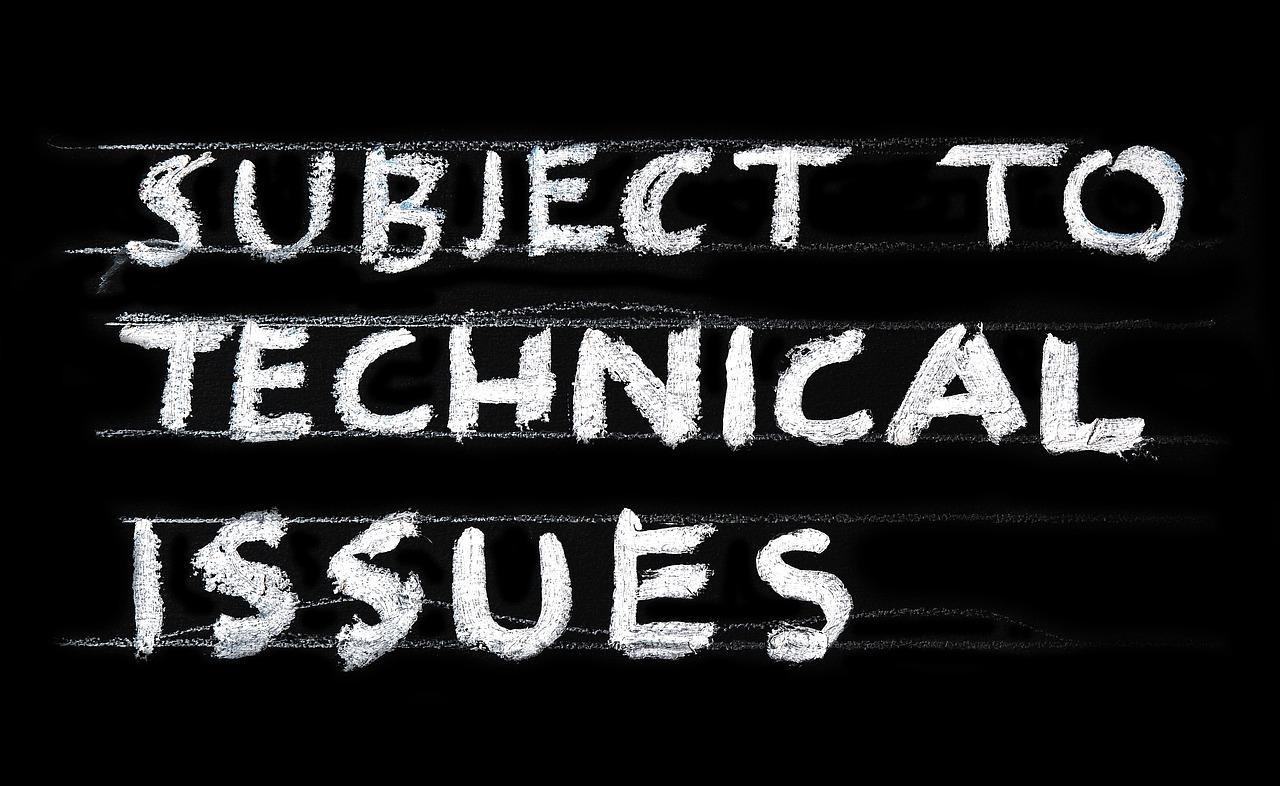
Understanding Technical Analysis
Technical analysis is like having a crystal ball for traders—well, sort of! Instead of gazing into a mystical orb, traders rely on price movements and trading volumes to predict future market behavior. By examining historical data, they can uncover trends and patterns that might hint at where prices are headed next. Imagine trying to find your way through a dense forest; technical analysis is the map that helps you navigate through the chaos of market fluctuations.
At its core, technical analysis is built on the premise that all necessary information is already reflected in the price of an asset. This means that traders don't need to delve into company fundamentals or economic indicators; they simply need to analyze the price action. It's a bit like watching a movie trailer to gauge whether the full film is worth your time—you're looking for cues that suggest what to expect in the future.
So, how do traders go about this? They look for various indicators and patterns that can signal potential market opportunities. Some key elements include:
- Price Trends: Recognizing whether an asset is in an upward, downward, or sideways trend can help traders make informed decisions.
- Volume: Analyzing trading volume can provide insights into the strength of a price movement. High volume often confirms a trend, while low volume may suggest weakness.
- Market Sentiment: Understanding the overall mood of the market can help traders gauge whether to be bullish or bearish.
By utilizing these components, traders can develop a clearer picture of the market landscape. It's important to remember that technical analysis isn't foolproof; it doesn't guarantee success. However, when used effectively, it can significantly improve a trader's chances of making profitable decisions.
In summary, technical analysis is an essential tool for traders looking to navigate the often turbulent waters of the financial markets. By focusing on price movements and volume data, they can identify trends and patterns that may reveal lucrative opportunities. So, whether you're a seasoned trader or just starting, understanding the principles of technical analysis can be your ticket to making more informed investment choices.
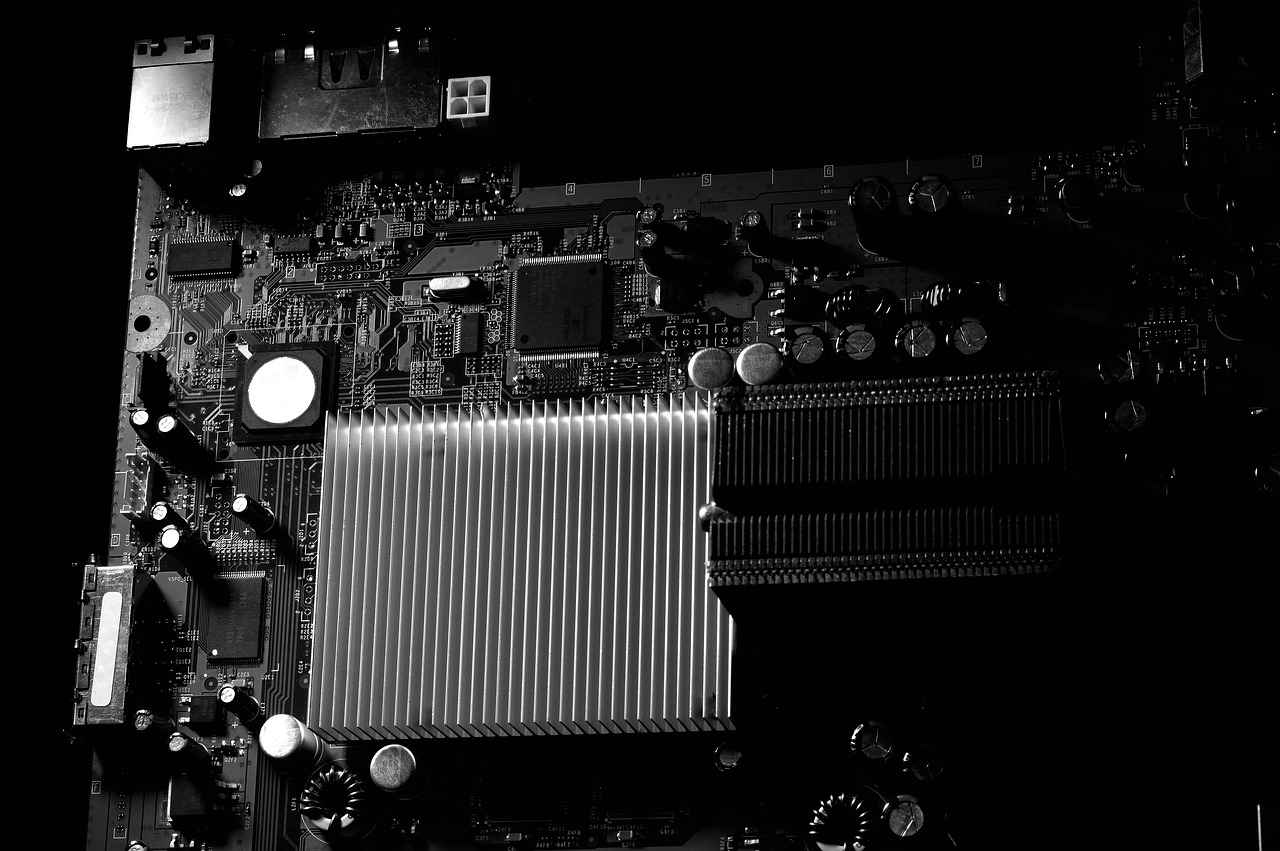
Key Tools of Technical Analysis
When diving into the world of technical analysis, it's essential to equip yourself with the right tools. Think of these tools as your trusty compass and map in the vast wilderness of financial markets. They guide you through the dense forest of price movements and trading volumes, helping you uncover hidden opportunities. The primary tools employed in technical analysis include charts, indicators, and oscillators. Each of these tools plays a pivotal role in assisting traders to make informed decisions based on market data.
First up are charts. These visual representations of price movements over time are fundamental to technical analysis. They allow traders to spot trends and patterns at a glance. There are several types of charts, each offering unique insights:
| Chart Type | Description |
|---|---|
| Line Chart | Displays closing prices over a period, making it easy to identify overall trends. |
| Bar Chart | Shows the open, high, low, and close prices for a specific time period, providing more detail than line charts. |
| Candlestick Chart | Illustrates price movements within a specific timeframe, highlighting market sentiment through various patterns. |
Among these, candlestick charts are particularly popular due to their ability to convey a wealth of information about market sentiment. By recognizing specific candlestick patterns, such as dojis, hammers, and engulfing candles, traders can gain insights into potential market reversals or continuations. For instance, a doji, which indicates indecision in the market, can signal that a reversal may be on the horizon. Understanding these patterns is akin to reading the mood of a crowd; it helps you anticipate the next move.
Another essential aspect of technical analysis is the use of trend lines and channels. Drawing these lines on your charts can help you visualize price movements and identify key support and resistance levels. A trend line, for example, connects the lows in a bullish market, while a channel encompasses the price action, providing clarity on potential entry or exit points. These tools are invaluable, as they can help traders navigate through the noise of market fluctuations.
Next, we have indicators, which are mathematical calculations based on price and volume data. They serve as a magnifying glass, allowing traders to see market conditions more clearly. Indicators can be categorized into leading and lagging types. Leading indicators, like the Relative Strength Index (RSI), attempt to predict future price movements, while lagging indicators, such as moving averages, confirm trends that have already occurred. This distinction is crucial; relying solely on leading indicators can lead to premature decisions, while lagging indicators can help validate your strategies.
In summary, mastering the key tools of technical analysis is critical for any trader looking to identify market opportunities. Whether it's through the use of various chart types, recognizing candlestick patterns, drawing trend lines, or utilizing indicators, each tool provides unique insights that help shape your trading strategy. As you become more familiar with these tools, you'll find yourself better equipped to navigate the complexities of the market and make informed decisions that can lead to successful trading outcomes.
- What is technical analysis? - Technical analysis is the study of past market data, primarily price and volume, to forecast future price movements.
- How do I start using technical analysis? - Begin by familiarizing yourself with different chart types and indicators, and practice analyzing historical price movements.
- Can technical analysis guarantee profits? - No, while technical analysis can enhance decision-making, it does not guarantee profits as market conditions can change rapidly.

Charts and Their Types
When it comes to technical analysis, charts are your best friends. They serve as the canvas where the story of market price movements is painted. By visually representing data over time, charts allow traders to spot trends, reversals, and potential opportunities at a glance. There are several types of charts, each with its own unique features and advantages. Understanding these different chart types is crucial for any trader looking to make informed decisions.
The most common types of charts include:
- Line Charts: These are the simplest form of charts, connecting closing prices over a specified time period. They provide a clear view of the overall trend but lack detailed information about price fluctuations.
- Bar Charts: Bar charts display the open, high, low, and close prices for a specific time frame, offering more detail than line charts. Each bar represents a single time period, making it easier to see price movements and volatility.
- Candlestick Charts: Perhaps the most popular among traders, candlestick charts provide a visual representation of price movements using "candles." Each candle shows the open, high, low, and close prices within a specific period. The body of the candle is colored based on whether the price went up or down, giving traders immediate insight into market sentiment.
Among these, candlestick charts are particularly powerful. They not only provide detailed information about price action but also allow traders to identify specific patterns that can indicate potential market reversals or continuations. For instance, patterns like dojis, which indicate indecision in the market, or hammers, which suggest potential reversals, are critical for making timely trading decisions.
Additionally, understanding how to draw trend lines and channels on these charts can further enhance your analysis. Trend lines help traders visualize the direction of the market by connecting significant highs or lows, while channels show the range within which the price is moving. This visual representation can clarify potential entry and exit points, making it easier to devise a trading strategy.
In conclusion, mastering the different types of charts is essential for any trader looking to leverage technical analysis effectively. Whether you prefer the simplicity of line charts or the detailed insights provided by candlestick charts, each type has its own strengths that can enhance your trading experience. The key is to experiment with them and find out which works best for your trading style.

Candlestick Patterns
Candlestick patterns are like the secret language of the market, speaking volumes through their shapes and formations. These patterns provide traders with insights into market sentiment, helping them gauge whether buyers or sellers are in control. Understanding candlestick patterns is crucial for anyone looking to navigate the often turbulent waters of trading. Think of each candlestick as a story, telling you about the battle between buyers and sellers over a specific time frame.
Each candlestick consists of a body and wicks (or shadows), which represent the open, close, high, and low prices during that period. The body can be either filled (usually red or black) or hollow (often green or white), indicating whether the closing price was lower or higher than the opening price. This simple visual cue can tell you a lot about market dynamics. For instance, a filled candlestick suggests selling pressure, while a hollow candlestick indicates buying pressure.
Among the various candlestick patterns, some are particularly noteworthy:
- Dojis: These occur when the open and close prices are virtually the same, creating a cross-like shape. Dojis signify indecision in the market and can indicate potential reversals when they appear after a strong trend.
- Hammers: With a small body at the top and a long lower wick, hammers suggest that buyers are stepping in after a sell-off. If you spot a hammer at the bottom of a downtrend, it might be time to consider a buying opportunity.
- Engulfing Patterns: These consist of two candlesticks where the second candle completely engulfs the first. A bullish engulfing pattern, where a large green candle follows a small red one, can signal a potential upward reversal, while a bearish engulfing pattern can indicate a downward reversal.
Recognizing these patterns can significantly enhance your trading strategy. For instance, if you see a doji after a prolonged uptrend, it might be a warning sign that the trend could be losing steam. On the other hand, a hammer after a downtrend could be a signal that it’s time to buy. The key is to combine these patterns with other technical analysis tools to confirm your trading decisions.
To further illustrate the importance of candlestick patterns, consider the following table that highlights some common patterns and their implications:
| Pattern | Description | Implication |
|---|---|---|
| Dojis | Open and close prices are nearly equal | Market indecision; potential reversal |
| Hammers | Small body at the top with a long lower wick | Buying pressure after a downtrend; potential buy signal |
| Engulfing Patterns | Second candle engulfs the first | Potential reversal; bullish or bearish depending on the direction |
In conclusion, mastering candlestick patterns is an essential skill for traders looking to improve their market analysis. By interpreting these visual cues, you can gain a deeper understanding of market sentiment and make more informed trading decisions. Remember, though, that no single pattern is foolproof. Always combine your analysis with other technical indicators and market context to ensure a well-rounded approach to trading.
Q1: What is a candlestick pattern?
A candlestick pattern is a formation created by one or more candlesticks on a price chart, which traders analyze to predict future price movements.
Q2: How can I identify candlestick patterns?
You can identify candlestick patterns by visually inspecting price charts and looking for specific formations like dojis, hammers, and engulfing patterns.
Q3: Are candlestick patterns reliable?
While candlestick patterns can provide valuable insights into market sentiment, they should not be used in isolation. It's best to combine them with other technical analysis tools for more reliable trading signals.

Trend Lines and Channels
Trend lines and channels are essential tools in technical analysis, acting as the backbone for visualizing price movements in the market. By drawing trend lines, traders can identify the direction of an asset's price over time, which is crucial for making informed trading decisions. A trend line is simply a straight line that connects two or more price points and extends into the future, allowing traders to see potential support and resistance levels. Imagine it as the road map of a journey; it guides you through the twists and turns of the market landscape.
There are two main types of trend lines: upward trend lines and downward trend lines. An upward trend line is drawn by connecting the lows of the price action, indicating that the asset is gaining value over time. Conversely, a downward trend line connects the highs, suggesting a decline in price. The slope of these lines helps traders gauge the strength of a trend. A steeper slope typically signifies a stronger trend, while a gentle slope may indicate a weakening momentum.
Channels, on the other hand, are formed by drawing two parallel trend lines—one above the price action and one below. This creates a channel where the price can oscillate between the upper resistance line and the lower support line. Channels can be ascending, descending, or horizontal:
- Ascending Channels: Indicate a bullish market where prices are expected to rise.
- Descending Channels: Suggest a bearish market, where prices are anticipated to fall.
- Horizontal Channels: Reflect a consolidation phase, indicating that the market is moving sideways.
Understanding how to draw and interpret these trend lines and channels can significantly enhance a trader's ability to predict future price movements. For instance, when the price approaches the upper trend line in an ascending channel, it may be a signal to consider taking profits or placing a short position, as it could indicate a potential reversal. Similarly, if the price hits the lower trend line, it might present a buying opportunity, as the price could bounce back towards the upper line.
In summary, mastering trend lines and channels is like learning to read the pulse of the market. They provide clarity amid chaos, enabling traders to spot potential entry and exit points with greater accuracy. Incorporating these tools into your trading strategy can lead to more informed decisions and ultimately, better trading outcomes.
Q1: What is the difference between support and resistance?
A: Support is a price level where a downtrend can be expected to pause due to a concentration of demand. Resistance, conversely, is a price level where an uptrend can stall due to selling pressure.
Q2: How do I know if a trend line is valid?
A: A trend line is considered valid if it connects at least two price points and is not violated by subsequent price movements. The more times a trend line is tested without being broken, the stronger it is perceived to be.
Q3: Can I use trend lines on any asset?
A: Yes, trend lines can be applied to any trading asset, including stocks, forex, commodities, and cryptocurrencies. However, the effectiveness may vary depending on market conditions and volatility.

Indicators: Leading vs. Lagging
When diving into the world of technical analysis, one of the most critical aspects to grasp is the difference between leading and lagging indicators. These indicators serve as essential tools for traders, helping them navigate the often turbulent waters of market movements. But what exactly do they mean, and how can they be effectively utilized in trading strategies?
Leading indicators are like the early warning systems of the trading world. They attempt to predict future price movements based on current market conditions. By analyzing these indicators, traders can get a glimpse of where the market might be headed before the actual price changes occur. Common examples of leading indicators include:
- Relative Strength Index (RSI)
- Stochastic Oscillator
- Moving Average Convergence Divergence (MACD)
On the flip side, we have lagging indicators, which are often viewed as the rearview mirrors of trading. These indicators provide insight into past price movements and trends, confirming whether a trend is indeed in motion. They are particularly useful for traders looking to validate their strategies after a trend has been established. Notable lagging indicators include:
- Simple Moving Average (SMA)
- Exponential Moving Average (EMA)
- Moving Average Envelopes
Understanding the interplay between leading and lagging indicators is crucial for developing a robust trading strategy. While leading indicators can signal potential entry points, lagging indicators can help confirm the validity of these signals. For instance, a trader might observe a bullish signal from a leading indicator but would want to wait for a confirmation from a lagging indicator before making a move. This combination can significantly enhance the chances of making informed decisions in the market.
In practice, many traders use a blend of both types of indicators to create a well-rounded trading approach. By doing so, they can capitalize on the predictive nature of leading indicators while simultaneously ensuring that their decisions are backed by the historical data provided by lagging indicators. The synergy between these tools can lead to a more effective trading strategy, allowing traders to navigate the complexities of the market with greater confidence.
In summary, both leading and lagging indicators play pivotal roles in technical analysis. By understanding their functions and how they complement one another, traders can better identify potential market opportunities and make more informed investment decisions.

Developing a Trading Strategy
When it comes to trading, having a well-defined strategy is like having a roadmap on a long journey. It guides you through the twists and turns of the market, helping you navigate potential pitfalls while maximizing opportunities. Developing a trading strategy is not just about picking a stock and hoping for the best; it involves a systematic approach that integrates technical analysis principles. So, how do you go about crafting this all-important strategy?
First and foremost, you need to establish clear entry and exit points. Think of this as setting the parameters for your trading journey. Entry points are the moments when you decide to buy into an asset, while exit points determine when you will sell. A good strategy will outline these points based on technical indicators, chart patterns, and market conditions. For example, you might decide to enter a trade when a stock breaks above a specific resistance level or exits when it hits a predetermined profit target.
Next, we can't overlook the importance of risk management techniques. Imagine driving a car without a seatbelt—risky, right? Similarly, in trading, you need to protect yourself from potential losses. Techniques such as setting stop-loss orders can help minimize losses by automatically selling an asset when it reaches a certain price. This way, you can avoid emotional decisions that may lead to bigger losses. Additionally, understanding position sizing is crucial; it involves determining how much capital to allocate to each trade based on your overall portfolio size and risk tolerance.
Another key aspect of developing a trading strategy is performance evaluation. After executing a series of trades, it's essential to look back and assess what worked and what didn't. This reflection can involve analyzing the success rate of your trades, the effectiveness of your entry and exit points, and your adherence to risk management protocols. By keeping a trading journal, you can document your trades and the thought process behind them, which can be invaluable for future reference.
To sum it up, developing a trading strategy is a multi-faceted process that requires careful consideration and planning. By establishing clear entry and exit points, implementing effective risk management techniques, and continuously evaluating your performance, you set yourself up for success in the unpredictable world of trading. Remember, even the best strategies require adjustments and fine-tuning over time, so stay flexible and open to change.
- What is the most important aspect of a trading strategy? The most crucial aspect is risk management, as it helps protect your capital and minimize losses.
- How often should I evaluate my trading strategy? Regular evaluations, such as monthly or quarterly, can help you stay on track and make necessary adjustments.
- Can I use technical analysis for long-term trading? Absolutely! While technical analysis is often associated with short-term trading, it can also be beneficial for long-term strategies.
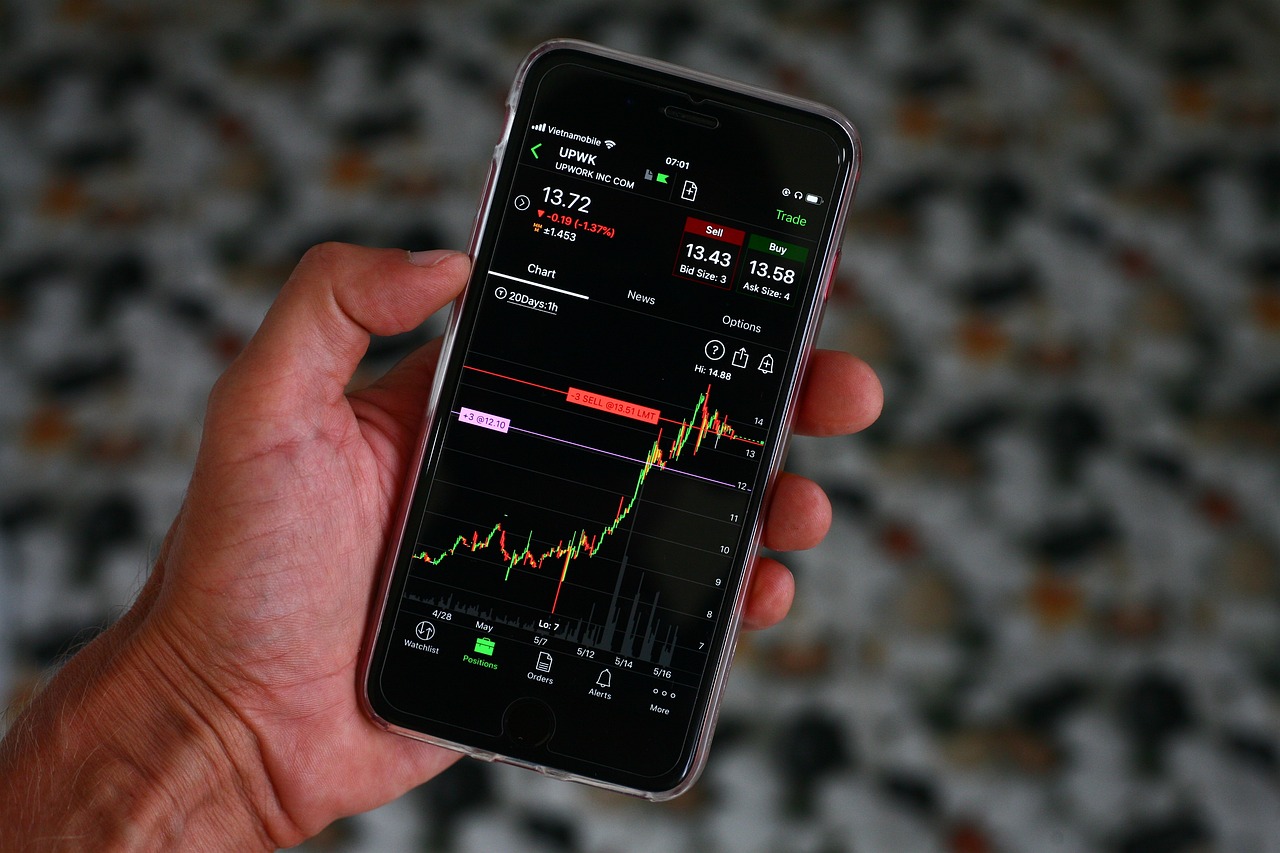
Risk Management Techniques
When it comes to trading, the excitement of potential profits can often overshadow the importance of risk management. Think of trading as a thrilling rollercoaster ride—while the highs can be exhilarating, the lows can be gut-wrenching. To enjoy the ride without losing your lunch (or your capital), you need to implement solid risk management techniques. These techniques not only help in protecting your investments but also allow you to trade with confidence.
One of the most fundamental risk management techniques is the use of stop-loss orders. A stop-loss order is a predetermined price point at which you will exit a losing trade. Imagine you’ve bought a stock at $50, but you’re willing to risk only $5. By setting a stop-loss at $45, you automatically limit your losses. This simple yet effective strategy ensures that you don’t let emotions dictate your trading decisions when the market takes a turn for the worse.
Another crucial aspect of risk management is position sizing. This technique involves determining how much capital to allocate to a specific trade based on your overall account size and risk tolerance. For instance, if your trading account has $10,000 and you decide to risk only 1% on a trade, you would risk $100. This approach not only protects your account from significant losses but also allows you to take advantage of multiple trading opportunities without putting your entire capital at risk.
To illustrate the importance of position sizing, consider the following table:
| Account Size | Risk per Trade (1%) | Position Size (if risking $10 per share) |
|---|---|---|
| $10,000 | $100 | 10 shares |
| $20,000 | $200 | 20 shares |
| $50,000 | $500 | 50 shares |
As you can see, the larger your account size, the more you can risk while still adhering to the 1% rule. This method allows traders to scale their positions accordingly without exposing themselves to catastrophic losses.
Additionally, it’s essential to diversify your trading portfolio. Just like you wouldn’t put all your eggs in one basket, you shouldn’t concentrate all your investments in a single asset or sector. By spreading your investments across different stocks, commodities, or currencies, you can mitigate risks. If one asset underperforms, others may perform well, balancing out your overall portfolio performance.
Finally, regularly reviewing and adjusting your risk management strategies is vital. Markets are dynamic, and what worked yesterday may not work tomorrow. Keep an eye on your trades, analyze your performance, and be willing to adapt your strategies as needed. This proactive approach can help you stay ahead of the curve and make informed decisions that align with your trading goals.
In conclusion, effective risk management is the backbone of successful trading. By implementing techniques such as stop-loss orders, position sizing, diversification, and regular reviews, traders can protect their capital and enhance their chances of long-term success. Remember, in the world of trading, it's not just about how much you make, but also how much you keep!
- What is a stop-loss order? A stop-loss order is an instruction to sell a security when it reaches a certain price, helping to limit potential losses.
- How do I determine my position size? Position size can be determined by calculating the amount you are willing to risk on a trade, typically expressed as a percentage of your total trading capital.
- Why is diversification important in trading? Diversification helps to spread risk across various assets, reducing the impact of a poor-performing investment on your overall portfolio.
- How often should I review my risk management strategies? It's advisable to review your strategies regularly, especially after significant market changes or personal trading performance evaluations.

Backtesting Your Strategy
Backtesting your trading strategy is like taking a time machine back to the past to see how your ideas would have performed. Instead of jumping into the market blindfolded, you can analyze historical data to evaluate the effectiveness of your strategy. This process is essential because it allows traders to refine their strategies, gauge their potential profitability, and build confidence before risking real money in the market.
Imagine you're a chef perfecting a new recipe. You wouldn’t just serve it up to guests without tasting it first, right? Similarly, backtesting lets traders "taste" their strategies using past market data. By simulating trades as if they were executed in real-time, you can identify what works, what doesn’t, and make adjustments accordingly. This iterative process not only enhances your strategy but also helps you understand the market's behavior under different conditions.
To effectively backtest a trading strategy, consider the following steps:
- Define Your Strategy: Clearly outline the rules for entering and exiting trades, including any indicators or patterns you plan to use.
- Gather Historical Data: Ensure you have access to accurate historical price data for the asset you wish to analyze. This data should cover various market conditions.
- Simulate Trades: Apply your strategy to the historical data, simulating trades as if they were executed in real-time. Record the outcomes to analyze later.
- Analyze Results: Look at key metrics such as win rate, average profit per trade, and maximum drawdown. This analysis will help you understand the viability of your strategy.
- Refine Your Approach: Based on your findings, tweak your strategy to improve performance. This could involve adjusting entry and exit points or incorporating additional indicators.
It’s also important to consider the limitations of backtesting. Just because a strategy performed well in the past doesn’t guarantee future success. Markets are dynamic, and conditions can change rapidly. Therefore, it’s crucial to remain adaptable and willing to adjust your strategy as new data comes in. Additionally, overfitting—where a strategy is too closely tailored to historical data—can lead to poor performance in live markets. Always maintain a balance between optimization and realism.
Incorporating backtesting into your trading routine can significantly enhance your confidence and decision-making abilities. It’s like having a safety net that allows you to experiment and learn without the financial risk. So, before you dive into the market, take the time to backtest your strategy and ensure you have a solid plan in place!
What is backtesting?
Backtesting is the process of applying a trading strategy to historical market data to evaluate its effectiveness and potential profitability.
Why is backtesting important?
Backtesting helps traders refine their strategies, build confidence, and understand how their approach might perform under different market conditions without risking real capital.
Can backtesting guarantee future success?
No, backtesting cannot guarantee future success. Markets are dynamic and can change, so it’s essential to remain adaptable and continually refine your strategies.
What should I look for when analyzing backtesting results?
Key metrics to analyze include win rate, average profit per trade, maximum drawdown, and overall profitability. These metrics will give you insights into the viability of your strategy.
Frequently Asked Questions
- What is technical analysis?
Technical analysis is a method used by traders to evaluate and forecast price movements in financial markets by analyzing historical price data and trading volumes. It focuses on trends and patterns that can indicate future market behavior, helping traders make informed decisions.
- What tools are commonly used in technical analysis?
Some of the key tools in technical analysis include charts (like line, bar, and candlestick charts), indicators (both leading and lagging), and oscillators. These tools provide visual representations and calculations that help traders identify market trends and potential trading opportunities.
- How do candlestick patterns work?
Candlestick patterns are graphical representations of price movements that help traders gauge market sentiment. Patterns such as dojis, hammers, and engulfing candles can signal potential reversals or continuations in price trends, making them essential for decision-making.
- What are trend lines and why are they important?
Trend lines are straight lines drawn on charts to connect significant price points, which help traders visualize the direction of the market. They indicate support and resistance levels, making it easier to identify potential entry and exit points in trading.
- What is the difference between leading and lagging indicators?
Leading indicators are designed to predict future price movements based on current data, while lagging indicators are used to confirm trends after they have occurred. Both types of indicators offer valuable insights but serve different purposes in a trader's strategy.
- How can I develop an effective trading strategy?
To develop a successful trading strategy, you should define your entry and exit points, incorporate risk management techniques, and establish methods for evaluating your performance. This structured approach helps enhance trading effectiveness and reduces emotional decision-making.
- What are some risk management techniques I can use?
Effective risk management techniques include setting stop-loss orders to limit potential losses, position sizing to control exposure, and diversifying your portfolio to spread risk. These practices are essential for protecting your capital in volatile market conditions.
- What is backtesting and why is it important?
Backtesting involves applying a trading strategy to historical market data to assess its effectiveness. This process allows traders to refine their strategies, gain confidence in their approach, and make necessary adjustments before trading with real money in live markets.







